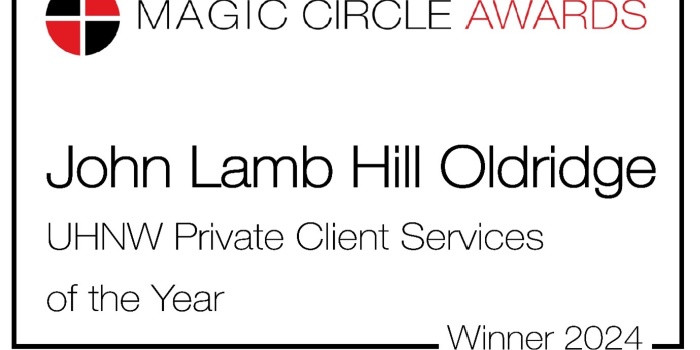Using life insurance as an alternative to holding assets in trust – a thought piece

In the following article, Jacob Fay, protection specialist at John Lamb Hill Oldridge, explores how life insurance can be a cost-effective alternative to holding assets in trust for high-net-worth clients and their families.
Using life insurance as an alternative to holding assets in trust – a thought piece
Within estate planning, the debate between procuring life insurance versus placing assets into trust is one that often arises. Both avenues offer distinct advantages and serve unique purposes, yet the choice between them hinges on individual circumstances, financial goals, and the specific needs of the beneficiaries.
Where you have trust funds for younger lives, you might want to consider both the impacts of the 10-yearly periodic charges and the annual accounting costs. When opting for a trust, the periodic charges and administrative overheads can accrue over time, potentially impacting the overall value of the assets held within the trust.
Moreover, the meticulous record-keeping and reporting obligations can add to the administrative burden, necessitating ongoing attention and resources. It can be useful to compare this to the costs of maintaining a life insurance policy.
The below illustration is based on an initial trust value of £1 million and an equivalent sum insured with inheritance tax (IHT) at 40% if the assets were not held in trust. We have assumed a fund growth rate of 3% annually and an equivalent 3% escalation of the sum insured, with premiums increasing by 4.5%. The client is a 26-year-old non-smoker.

When comparing the cumulative periodic charges with the cumulative premiums over both the short and long term, for a term life insurance policy running until age 90, the total cost of purchasing life insurance is significantly cheaper. Even when comparing the cost of purchasing a whole-of-life policy, the premiums would only surpass the cumulative periodic charges when the client reached age 79.
Additionally, this comparison does not factor in any costs associated with the trust except the periodic charges. As such, the overall trust charges may be higher, meaning the costs of whole-of-life cover would remain the cheaper option.
Taking out a life insurance policy to cover the IHT liability on the assets can provide a simple and cost-effective solution in comparison to placing assets into trust. Paying an annual premium of either £458 or £1,958, in this instance, is far more manageable and the planning is less complicated than co-ordinating the cash necessary for payment of a 6% periodic charge.
One important point to consider is that the trustees may not wish to release assets to younger beneficiaries. A primary concern for trustees can be the beneficiaries’ maturity and financial responsibility. Younger individuals may lack the experience and judgment needed to handle significant sums of money wisely. Handing over a substantial inheritance too soon could disincentivise them from pursuing their own ambitions and achieving financial independence through their efforts.
Secondly, depending on the assets within the trust, there may not be sufficient liquidity to pay the periodic charges. Illiquid assets, such as property, art portfolios, or other types of investments, may not generate regular income or easily convert into cash. As a result, trustees may face difficulty in raising the necessary funds to cover the ongoing and periodic charges.
Unlike liquid assets, which can be readily sold or converted, illiquid assets may require time-consuming processes to generate cash. Trustees might need to sell the assets in the market, find suitable buyers, or navigate complex valuation procedures, leading to delays in accessing funds for periodic charges.
The illiquidity of certain assets can create cashflow issues for trusts, requiring careful financial planning and strategic decision-making by trustees to ensure that the trust remains adequately funded and can fulfil its financial obligations over time. A life insurance policy can provide an easy-to-administrate and low-cost alternative to holding assets in trust.
This article was first published in IFA magazine on 31 January 2024.
Get in touch
If you would like to learn more about how John Lamb Hill Oldridge can help you to support your high-net-worth and ultra-high-net-worth clients in using life insurance to create a tax-efficient estate plan, please get in touch. Email [email protected] or call us on 020 7633 2222.
Please note
Please do not act based on anything you might read in this article. This article is no substitute for financial advice. You should seek a professional opinion before making a decision.
All contents are based on our understanding of HMRC legislation, which is subject to change.
Other Insights
John Lamb Hill Oldridge launches dedicated insurance-based investment products advice team
In recent months, many high-net-worth (HNW) individuals and families will have found themselves affected by changes to the Capital Gains Tax (CGT) rules and proposed reforms of the “non-dom” regime. To help advisers and their [...]
Holly Hill promoted to associate director
The UK’s foremost specialist protection adviser, John Lamb Hill Oldridge, has boosted its leadership team by promoting Holly Hill to the role of associate director. A former Team GB rower, Holly joined John Lamb Hill [...]
John Lamb Hill Oldridge wins gold at the Citywealth Magic Circle awards
Here at John Lamb Hill Oldridge, we are dedicated to providing the highest quality service to all of our clients. It is our mission to help them feel reassured about the future by arranging the [...]



